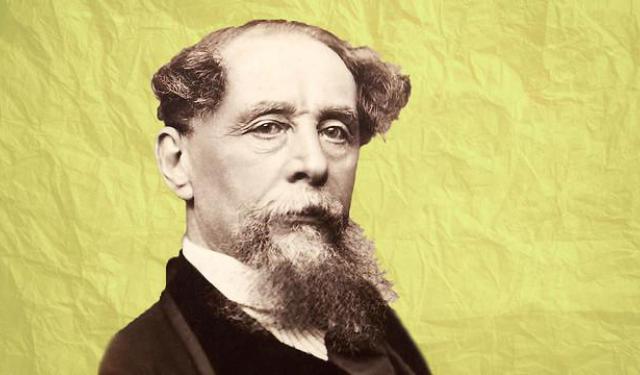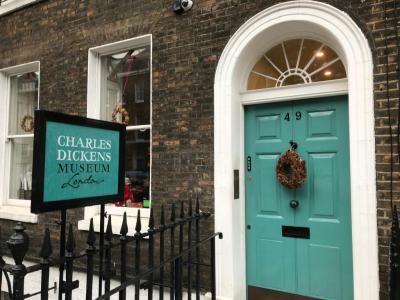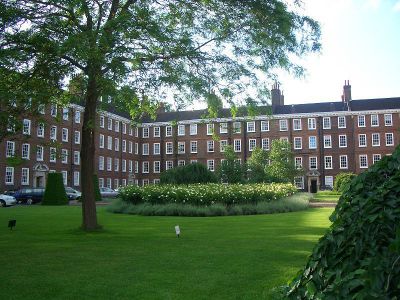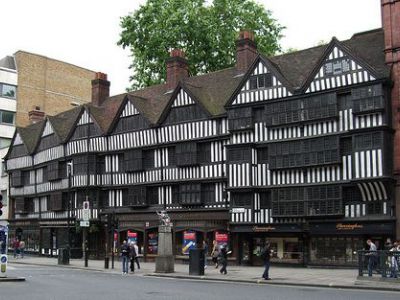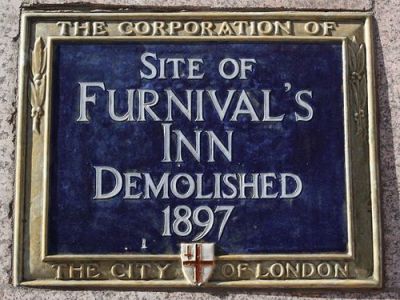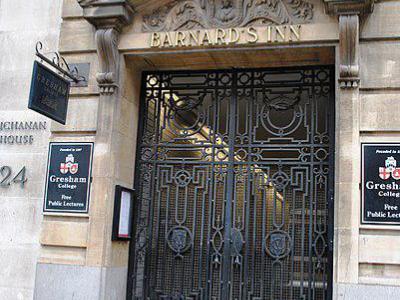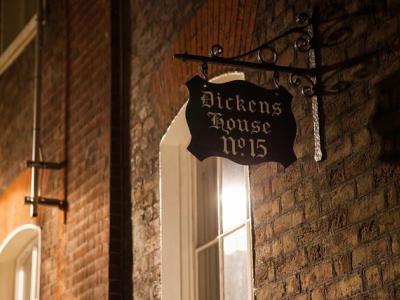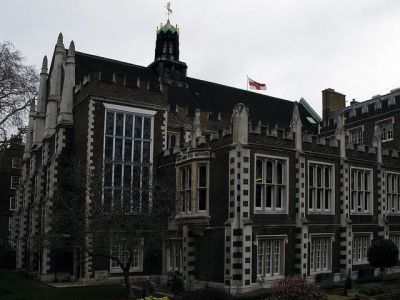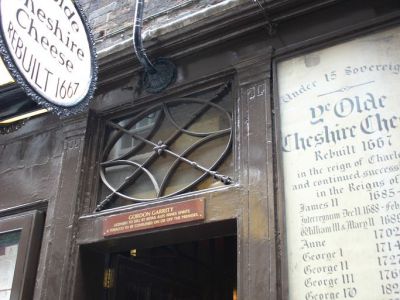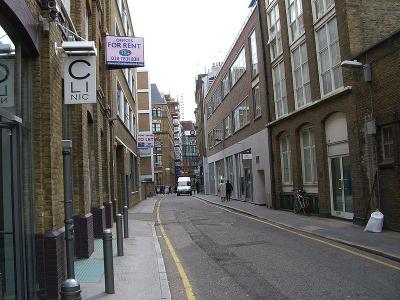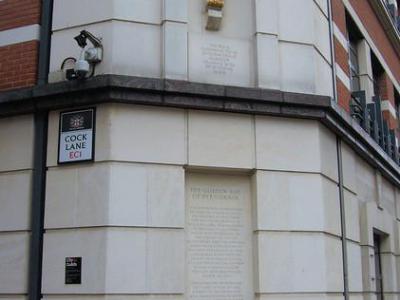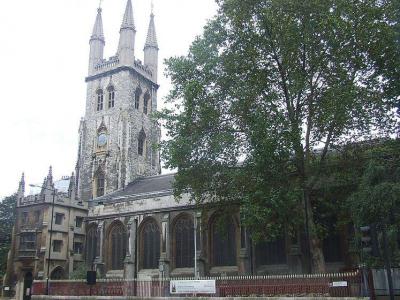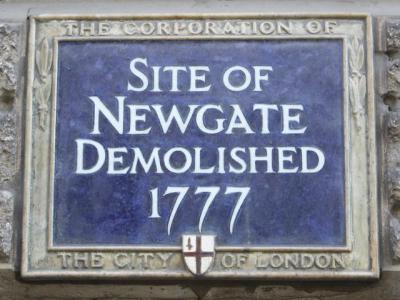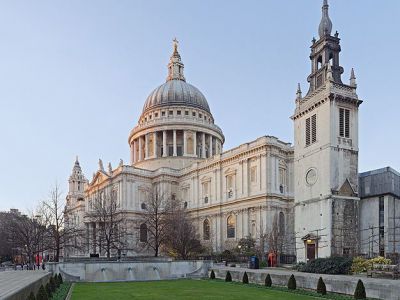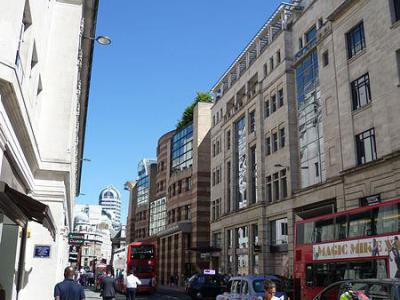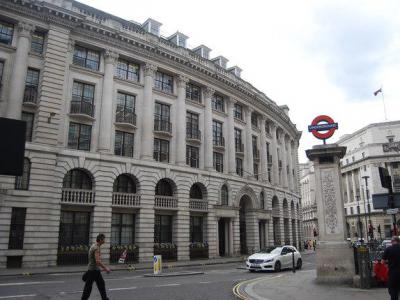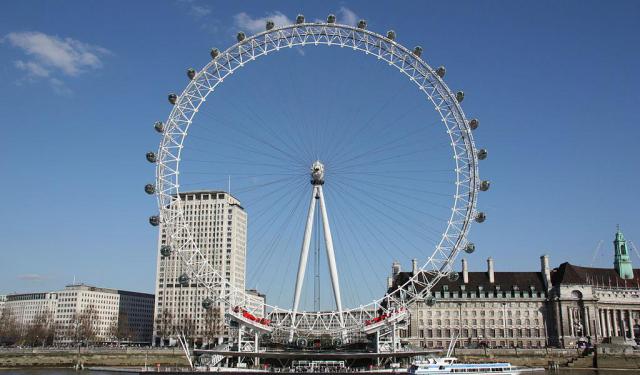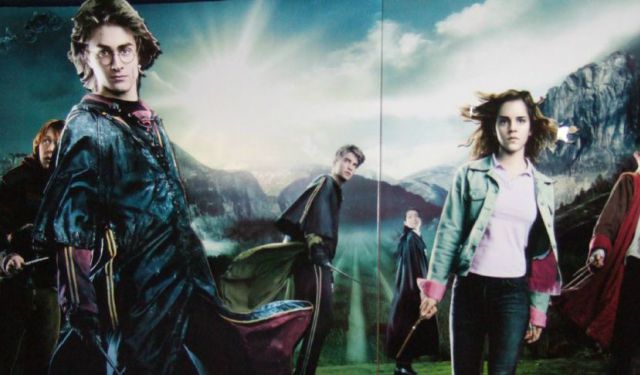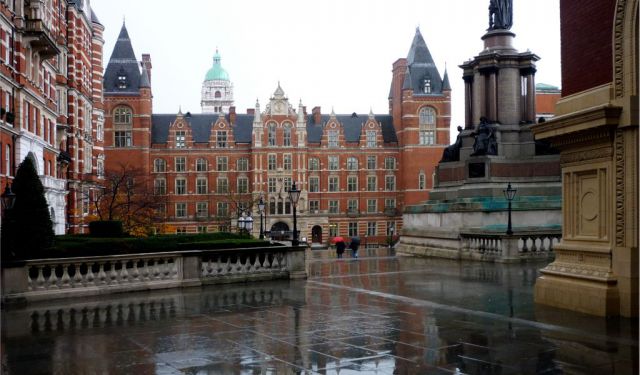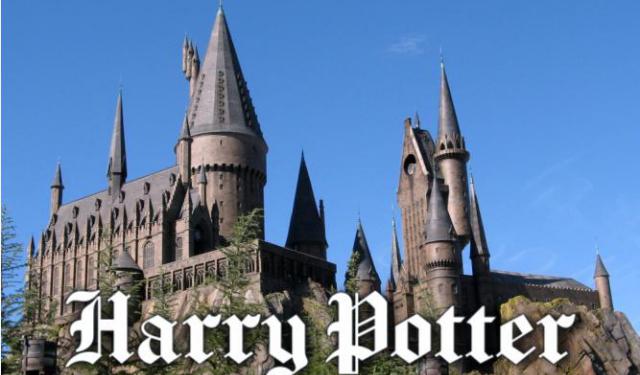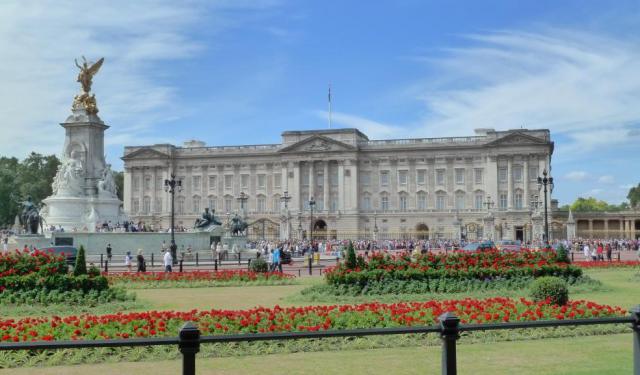Audio Guide: Charles Dickens Tour (Self Guided), London
Imagine a world without Dickens. No Oliver Twist, no Ebenezer Scrooge, no brooding orphans wandering foggy streets with suspiciously eloquent vocabularies. Tough to picture, right? That’s because Charles Dickens didn’t just leave a mark on literature-he practically steamrolled through it in a horse-drawn carriage. Recognized as the undisputed heavyweight of Victorian storytelling, he pioneered the “cliffhanger” ending and became one of the most widely read English authors ever. His books have never gone out of print, and Hollywood still can’t leave him alone.
Now, Dickens’ own life-it could’ve been a Dickens novel itself. Born in 1812 in Portsmouth, he moved to London young, just in time for things to go south. At age 12, his dad was put into debtors’ prison, and Dickens found himself pasting labels on shoe polish bottles in a ratty factory. But that early hardship later fueled his genius, bringing us unforgettable tales of class struggle, child labor, and grimy justice with a side of wit.
Once he traded factory fumes for ink fumes, Dickens soared. The Pickwick Papers put him in the spotlight in 1836, and from there it was a greatest-hits parade: Oliver Twist, David Copperfield, Great Expectations, A Christmas Carol. And where did he find his inspiration? London. Not just a setting-it was his co-star. Dickens roamed its streets at all hours, absorbing its smoky contrasts: from posh Bloomsbury to shady Clerkenwell, from the docks to the courts, London whispered, groaned, and shouted in every chapter.
And guess what, you can still walk through chunks of Dickensian London today. The Charles Dickens Museum at 48 Doughty Street is where Oliver Twist and The Pickwick Papers were born. Fancy a pint where Charles once nursed his creative thirst? Head to Ye Olde Cheshire Cheese pub on Fleet Street. Want to see where Oliver met his ragtag crew? Saffron Hill, once known as “little Hell,” awaits. And if you’re counting-Newgate Prison, Cheapside, St. Paul’s Cathedral-these landmarks pop up in multiple Dickens novels like recurring guest stars.
Dickens died in 1870, but if you’ve ever pictured a foggy lamplit alley with someone named Pip silently suffering-it’s official: you’ve been Dickens’d. So tighten that scarf, channel your inner orphan, and take this self-guided walking tour through the inky heart of Dickens' London!
Now, Dickens’ own life-it could’ve been a Dickens novel itself. Born in 1812 in Portsmouth, he moved to London young, just in time for things to go south. At age 12, his dad was put into debtors’ prison, and Dickens found himself pasting labels on shoe polish bottles in a ratty factory. But that early hardship later fueled his genius, bringing us unforgettable tales of class struggle, child labor, and grimy justice with a side of wit.
Once he traded factory fumes for ink fumes, Dickens soared. The Pickwick Papers put him in the spotlight in 1836, and from there it was a greatest-hits parade: Oliver Twist, David Copperfield, Great Expectations, A Christmas Carol. And where did he find his inspiration? London. Not just a setting-it was his co-star. Dickens roamed its streets at all hours, absorbing its smoky contrasts: from posh Bloomsbury to shady Clerkenwell, from the docks to the courts, London whispered, groaned, and shouted in every chapter.
And guess what, you can still walk through chunks of Dickensian London today. The Charles Dickens Museum at 48 Doughty Street is where Oliver Twist and The Pickwick Papers were born. Fancy a pint where Charles once nursed his creative thirst? Head to Ye Olde Cheshire Cheese pub on Fleet Street. Want to see where Oliver met his ragtag crew? Saffron Hill, once known as “little Hell,” awaits. And if you’re counting-Newgate Prison, Cheapside, St. Paul’s Cathedral-these landmarks pop up in multiple Dickens novels like recurring guest stars.
Dickens died in 1870, but if you’ve ever pictured a foggy lamplit alley with someone named Pip silently suffering-it’s official: you’ve been Dickens’d. So tighten that scarf, channel your inner orphan, and take this self-guided walking tour through the inky heart of Dickens' London!
How it works: Download the app "GPSmyCity: Walks in 1K+ Cities" from Apple App Store or Google Play Store to your mobile phone or tablet. The app turns your mobile device into a personal tour guide and its built-in GPS navigation functions guide you from one tour stop to next. The app works offline, so no data plan is needed when traveling abroad.
Charles Dickens Tour Map
Guide Name: Charles Dickens Tour
Guide Location: England » London (See other walking tours in London)
Guide Type: Self-guided Walking Tour (Sightseeing)
# of Attractions: 15
Tour Duration: 3 Hour(s)
Travel Distance: 4.5 Km or 2.8 Miles
Author: DanaOffice
Sight(s) Featured in This Guide:
Guide Location: England » London (See other walking tours in London)
Guide Type: Self-guided Walking Tour (Sightseeing)
# of Attractions: 15
Tour Duration: 3 Hour(s)
Travel Distance: 4.5 Km or 2.8 Miles
Author: DanaOffice
Sight(s) Featured in This Guide:
- Charles Dickens Museum
- Gray's Inn
- Staple Inn
- Furnival's Inn (Dickens' former residence)
- Barnard's Inn (Dickens-era site)
- Dickens House at 15 Took's Court
- Middle Temple
- Ye Olde Chesire Cheese
- Saffron Hill (Dickens-era site)
- Cock Lane (Dickens-era site)
- Holy Sepulchre Church
- Newgate Prison (Dickens-era site)
- St. Paul's Cathedral
- Cheapside
- Lombard Street (Dickens-era site)
1) Charles Dickens Museum
Tucked inside a prim Georgian townhouse on a posh London street that practically oozes with respectability, the Charles Dickens Museum is a tribute to the literary giant, complete with a full-on Dickensian deep dive. Spread across four floors, this was once the actual home of Charles, his wife Catherine, and their ever-expanding brood. Today, it's packed with the world's swankiest collection of Dickensiana: handwritten letters, first editions, personal effects, paintings, and the kind of furniture that, if it could, would probably whisper, "Please don't sit on me unless you're a Victorian novelist."
Dickens moved in here in 1837, freshly married and riding high on the success of his first two books. Within these walls, he cranked out Oliver Twist and Nicholas Nickleby, while starting Barnaby Rudge-because one book at a time is for amateurs. This house also saw life’s highs and lows: two of the Dickens children were born upstairs, and Catherine’s younger sister tragically died in Charles' arms. That heartbreaking moment he later rewrote into the demise of Little Nell in The Old Curiosity Shop.
Wandering through the museum feels like Dickens just popped out for a foggy walk. The rooms are restored to their original 1830s vibe, complete with Dickens’ own furniture, including his iconic writing desk-the very one he used during his dramatic public readings. You’ll also find the wistful, unfinished painting Dickens’ Dream, where he sits at his desk, surrounded by his fictional creations, likely wondering why they all have such complicated names.
Bonus perk: On select days, you can actually touch some of the artifacts. That’s right-gloveless time travel, Victorian-style. Just try not to spill your latte from the on-site café in the garden. Even Dickens would’ve frowned on that.
Dickens moved in here in 1837, freshly married and riding high on the success of his first two books. Within these walls, he cranked out Oliver Twist and Nicholas Nickleby, while starting Barnaby Rudge-because one book at a time is for amateurs. This house also saw life’s highs and lows: two of the Dickens children were born upstairs, and Catherine’s younger sister tragically died in Charles' arms. That heartbreaking moment he later rewrote into the demise of Little Nell in The Old Curiosity Shop.
Wandering through the museum feels like Dickens just popped out for a foggy walk. The rooms are restored to their original 1830s vibe, complete with Dickens’ own furniture, including his iconic writing desk-the very one he used during his dramatic public readings. You’ll also find the wistful, unfinished painting Dickens’ Dream, where he sits at his desk, surrounded by his fictional creations, likely wondering why they all have such complicated names.
Bonus perk: On select days, you can actually touch some of the artifacts. That’s right-gloveless time travel, Victorian-style. Just try not to spill your latte from the on-site café in the garden. Even Dickens would’ve frowned on that.
2) Gray's Inn
One of London’s four Inns of Court-the elite clubs that train barristers to argue persuasively and wear robes like it’s no big deal-Gray’s Inn is where powdered wigs, sharp tongues, and centuries of legal tradition collide! Alongside Lincoln’s Inn, Inner Temple, and Middle Temple, Gray’s Inn has been shaping courtroom drama since well before legal thrillers were a thing.
Governed by a council called "Pension," which sounds cozy but is not-they’re led by the Treasurer, a sort of head honcho elected yearly. The Masters of the Bench, or “benchers,” handle the serious business of keeping tradition alive while sipping tea in very old rooms. But don’t let the gravitas fool you-Gray’s Inn is also known for its leafy gardens, charmingly called "the Walks," which have been delighting stressed-out law students and ambitious climbers since at least 1597.
The Inn has a long legal rap sheet of history-law clerks have been skulking around here since 1370, and the place hit its heyday under Queen Elizabeth I, who acted as its patron. Legal legends like Francis Bacon-the English philosopher and statesman, who served as Attorney General and Lord Chancellor of England under King James I-once called it home. The Inn even flirted with theater fame: Shakespeare’s Comedy of Errors likely premiered in Gray’s Inn Hall during a particularly fancy night of masques and revels.
And here’s where things get a little Dickensian-literally. In 1827, a young Charles Dickens began his short-lived legal career here as a junior clerk. Though he quickly realized law wasn't his jam, he did pick up shorthand-a handy trick for his later work as a reporter and novelist. Gray’s Inn even made cameo appearances in David Copperfield and The Pickwick Papers, a little literary nod to the place where he almost became a barrister, but instead chose to write the books that made him a household name.
So next time you stroll past the ivy-covered buildings, remember: Gray’s Inn is where the law met literature-and both walked away a little more dramatic.
Governed by a council called "Pension," which sounds cozy but is not-they’re led by the Treasurer, a sort of head honcho elected yearly. The Masters of the Bench, or “benchers,” handle the serious business of keeping tradition alive while sipping tea in very old rooms. But don’t let the gravitas fool you-Gray’s Inn is also known for its leafy gardens, charmingly called "the Walks," which have been delighting stressed-out law students and ambitious climbers since at least 1597.
The Inn has a long legal rap sheet of history-law clerks have been skulking around here since 1370, and the place hit its heyday under Queen Elizabeth I, who acted as its patron. Legal legends like Francis Bacon-the English philosopher and statesman, who served as Attorney General and Lord Chancellor of England under King James I-once called it home. The Inn even flirted with theater fame: Shakespeare’s Comedy of Errors likely premiered in Gray’s Inn Hall during a particularly fancy night of masques and revels.
And here’s where things get a little Dickensian-literally. In 1827, a young Charles Dickens began his short-lived legal career here as a junior clerk. Though he quickly realized law wasn't his jam, he did pick up shorthand-a handy trick for his later work as a reporter and novelist. Gray’s Inn even made cameo appearances in David Copperfield and The Pickwick Papers, a little literary nod to the place where he almost became a barrister, but instead chose to write the books that made him a household name.
So next time you stroll past the ivy-covered buildings, remember: Gray’s Inn is where the law met literature-and both walked away a little more dramatic.
3) Staple Inn
Perched above Chancery Lane tube station, on the bustling southern side of High Holborn, is a Tudor-style wooden structure that looks like it time-traveled straight out of the 1500s-and got slightly jostled on the way. Say hello to Staple Inn: a timber-framed, gable-topped survivor with a façade so charmingly crooked it could star in its own period drama. Built in the 16th century, it somehow dodged the flames of the Great Fire of London-though the 1940s Blitz gave it a rougher time, prompting some serious restoration work.
Now, if you dare to wander through the narrow passage beneath the building, you’ll stumble into a peaceful courtyard that’s as Dickensian as it gets. Charles Dickens described this very spot in his final, unfinished novel, The Mystery of Edwin Drood, calling it “a little nook composed of two irregular quadrangles.” It’s here that the character Mr. Grewgious lived, and if that name doesn’t scream “Victorian eccentric,” what does? Dickens captured the vibe perfectly, writing that walking in from the noisy street feels like “placing cotton in your ears and velvet soles on your boots.” Still accurate. Still poetic. Still very Dickens.
And here’s the kicker: Dickens knew this courtyard firsthand. In the 1820s, he worked at a solicitor’s office just across the street in Gray’s Inn-one of the four Inns of Court. No, not a pub, but a lawyer-training headquarters where wigs, quills, and serious legal drama reigned supreme. Later, as a journalist, he would’ve seen those seven gables every day, possibly while plotting his next twist-filled chapter.
So next time you pass Staple Inn, take a detour through the archway. You might just hear the ghost of Dickens muttering something brilliant-or at least grumbling about deadlines...
Now, if you dare to wander through the narrow passage beneath the building, you’ll stumble into a peaceful courtyard that’s as Dickensian as it gets. Charles Dickens described this very spot in his final, unfinished novel, The Mystery of Edwin Drood, calling it “a little nook composed of two irregular quadrangles.” It’s here that the character Mr. Grewgious lived, and if that name doesn’t scream “Victorian eccentric,” what does? Dickens captured the vibe perfectly, writing that walking in from the noisy street feels like “placing cotton in your ears and velvet soles on your boots.” Still accurate. Still poetic. Still very Dickens.
And here’s the kicker: Dickens knew this courtyard firsthand. In the 1820s, he worked at a solicitor’s office just across the street in Gray’s Inn-one of the four Inns of Court. No, not a pub, but a lawyer-training headquarters where wigs, quills, and serious legal drama reigned supreme. Later, as a journalist, he would’ve seen those seven gables every day, possibly while plotting his next twist-filled chapter.
So next time you pass Staple Inn, take a detour through the archway. You might just hear the ghost of Dickens muttering something brilliant-or at least grumbling about deadlines...
4) Furnival's Inn (Dickens' former residence)
Step aside, posh Inns of Court-Furnival’s Inn was where the real (legal) magic once happened. Marking the spot where the Holborn Bars now loom, this lesser-known Inn of Chancery was founded around 1383, when Lord Furnival, who ultimately lent it his name, leased a boarding house to the Chancery clerks. These were the guys who drafted legal documents for the king’s courts, aided by eager apprentices just dipping their toes into lawyering. The setup stuck around until 1817, when the Society of Furnival's Inn was dissolved and the medieval structure was replaced by flats that politely kept the Furnival name alive.
Between 1834 and 1837, a young Charles Dickens moved into Furnival’s Inn with his brother Frederick, mostly because he had to keep their dad out of debtor’s prison again. The place wasn’t glamorous, but Dickens made the most of it. While living in those not-so-grand chambers, he began writing The Pickwick Papers, networked his way into London’s literary elite, and married Catherine Hogarth. Not bad for a guy dodging family debts and living above what was essentially Legal Airbnb.
Dickens liked the place enough to sneak it into his novel Martin Chuzzlewit, where John Westlock describes it as “a shady, quiet place” with a side of “monotonous and gloomy”-so, basically, Victorian vibes in full force. Yet, he also mentions the “snug chambers” and how the single guys there seemed to be thriving.
Today, Dickens's old stomping grounds are long gone, but a bust and plaque mark the spot-just in case you want to stand there, gaze thoughtfully, and mutter, “It was the best of Inns, it was the worst of Inns.”
Between 1834 and 1837, a young Charles Dickens moved into Furnival’s Inn with his brother Frederick, mostly because he had to keep their dad out of debtor’s prison again. The place wasn’t glamorous, but Dickens made the most of it. While living in those not-so-grand chambers, he began writing The Pickwick Papers, networked his way into London’s literary elite, and married Catherine Hogarth. Not bad for a guy dodging family debts and living above what was essentially Legal Airbnb.
Dickens liked the place enough to sneak it into his novel Martin Chuzzlewit, where John Westlock describes it as “a shady, quiet place” with a side of “monotonous and gloomy”-so, basically, Victorian vibes in full force. Yet, he also mentions the “snug chambers” and how the single guys there seemed to be thriving.
Today, Dickens's old stomping grounds are long gone, but a bust and plaque mark the spot-just in case you want to stand there, gaze thoughtfully, and mutter, “It was the best of Inns, it was the worst of Inns.”
5) Barnard's Inn (Dickens-era site)
Step into Barnard’s Inn-once a legal hangout, later a literary dump, and now an intellectual hotspot. Originally belonging to Gray of Chancery and existing from around 1454, it was named for and owned by the Mackworth family. Later, a guy called Lionel Barnard lodged here for a while, and, somehow, the place got stuck with his name for over five centuries.
Being one of the Inns of Chancery in Holborn, it moonlighted as a backdrop for none other than Charles Dickens in Great Expectations. When young Pip hits the big, foggy city of London around 1820, this is where he lands-rooming with Herbert Pocket in what Dickens, never one to sugar-coat, described as “a club for Tom-cats” tucked in a "rank corner.”
And he didn't stop there. Dickens laid it on thick: Barnard’s Inn was, in his words, “a flat burying-ground” featuring “the most dismal trees, dismal sparrows, dismal cats, and dismal houses”-basically, the starter pack for Victorian gloom. Broken windows, sad little curtains, half-dead flower pots, and the ghost of Lionel Barnard apparently feeding off the misery of tenants too broke-or too cursed-to leave.
Despite that glowing review, the place itself is architecturally fascinating. There’s a hall with 18th-century chambers, 15th-century timber bays, 16th-century linen-fold paneling, and Greater London’s only surviving crown posts. These days, it’s home to Gresham College, where public lectures happen under those same gloomy rafters-but with a lot more PowerPoint and a lot less Dickensian despair.
So go ahead-poke around Barnard’s Inn. Just watch out for the cats.
Being one of the Inns of Chancery in Holborn, it moonlighted as a backdrop for none other than Charles Dickens in Great Expectations. When young Pip hits the big, foggy city of London around 1820, this is where he lands-rooming with Herbert Pocket in what Dickens, never one to sugar-coat, described as “a club for Tom-cats” tucked in a "rank corner.”
And he didn't stop there. Dickens laid it on thick: Barnard’s Inn was, in his words, “a flat burying-ground” featuring “the most dismal trees, dismal sparrows, dismal cats, and dismal houses”-basically, the starter pack for Victorian gloom. Broken windows, sad little curtains, half-dead flower pots, and the ghost of Lionel Barnard apparently feeding off the misery of tenants too broke-or too cursed-to leave.
Despite that glowing review, the place itself is architecturally fascinating. There’s a hall with 18th-century chambers, 15th-century timber bays, 16th-century linen-fold paneling, and Greater London’s only surviving crown posts. These days, it’s home to Gresham College, where public lectures happen under those same gloomy rafters-but with a lot more PowerPoint and a lot less Dickensian despair.
So go ahead-poke around Barnard’s Inn. Just watch out for the cats.
6) Dickens House at 15 Took's Court
This charming old London residence has been around since 1720. Once the stomping ground of one Thomas Tooke, Esquire, it later gained a slightly more famous tenant, Charles Dickens. Back in his days as a parliamentary journalist, Dickens called this place home. And, according to a juicy 2016 scoop in the Evening Standard, it is here that he reportedly dreamt up everyone's favorite miser with a heart problem-Ebenezer Scrooge. An inspiration behind the character was allegedly a penny-pinching neighbor whose spirit of frugality may have made even Scrooge himself wince.
Fast forward to modern times, and Gryphon Property Partners slapped a cool £2.8 million price tag on this property-because apparently, historical inspiration comes at premium real estate rates.
Literary fans might recognize this address in disguise: in Bleak House, it becomes Cook’s Court, the paper-stuffed lair of Mr. Snagsby, a man knee-deep in everything from foolscap to ferrets (the string kind, not the animal). His office inventory reads like a Victorian stationery fever dream-paper in every shade of beige, ink by the bottle, quills, pins, pens, sealing wax, and small office cutlery sharp enough to threaten plot twists.
Snagsby, naturally, was the gold standard of husbands for the judgmental wives of Chancery Lane-because “eligible” might as well be presented in the form of a well-stocked inkstand.
And just like that, one humble house links one frugal neighbor, one ghost-riddled Christmas classic, and one impressively specific list of office supplies.
Fast forward to modern times, and Gryphon Property Partners slapped a cool £2.8 million price tag on this property-because apparently, historical inspiration comes at premium real estate rates.
Literary fans might recognize this address in disguise: in Bleak House, it becomes Cook’s Court, the paper-stuffed lair of Mr. Snagsby, a man knee-deep in everything from foolscap to ferrets (the string kind, not the animal). His office inventory reads like a Victorian stationery fever dream-paper in every shade of beige, ink by the bottle, quills, pins, pens, sealing wax, and small office cutlery sharp enough to threaten plot twists.
Snagsby, naturally, was the gold standard of husbands for the judgmental wives of Chancery Lane-because “eligible” might as well be presented in the form of a well-stocked inkstand.
And just like that, one humble house links one frugal neighbor, one ghost-riddled Christmas classic, and one impressively specific list of office supplies.
7) Middle Temple
Welcome to Temple, where London's legal elite rub shoulders with medieval ghosts and the spirit of Dickens still loiters by the fountain.
Temple is home to two of the legendary Inns of Court: Middle Temple and Inner Temple. But before the barristers moved in with their powdered wigs and legal jargon, this was sacred turf for the Knights Templar. Yep, the original warrior-monks. Their headquarters were right here, and rumor has it, their initiation rites went down in the crypt of Temple Church. Built in the 12th century and maintained by the Inns since 1608, this church still boasts a mighty Elizabethan organ and 13th-century stone knights lying eternally in its iconic round chapel-forever on break from crusading.
Step into Middle Temple, and it’s like time travel-Victorian fog not included. Charles Dickens himself described the place as having gates that whisper: “Who enters here leaves noise behind.” Over the years, its roll call has included heavyweights like Sir Walter Raleigh (a 17th-century English statesman, soldier, writer and explorer), novelist William Makepeace Thackeray (author of Vanity Fair), and, yes, Dickens himself-because, of course, he couldn't resist a good atmospheric setting.
Also, don’t miss Middle Temple Hall-a Tudor dream with timber for days. Over 100 feet long, 40 feet wide, and topped with a hammer-beam roof that would make any medieval carpenter proud. The walls are dressed in coats of arms and oil paintings that give serious “Game of Thrones meets courtroom drama” energy. These days, it’s mostly reserved for members, fancy receptions, and the occasional concert-so consider it the velvet rope of legal London.
Wander a little and you'll find Fountain Court-a peaceful courtyard where law students dine and Dickens once eavesdropped for inspiration. He even featured the bubbling fountain in Martin Chuzzlewit. And just nearby is Garden Court-a lush square overlooking the Thames, straight out of Great Expectations. This was Pip’s pad, where a stormy night and an ominous message-“Don’t go home”-set the stage for one of literature’s great reveals.
So go ahead, get lost in Temple's winding paths. Just don’t be surprised if you bump into a barrister… or a ghost.
Temple is home to two of the legendary Inns of Court: Middle Temple and Inner Temple. But before the barristers moved in with their powdered wigs and legal jargon, this was sacred turf for the Knights Templar. Yep, the original warrior-monks. Their headquarters were right here, and rumor has it, their initiation rites went down in the crypt of Temple Church. Built in the 12th century and maintained by the Inns since 1608, this church still boasts a mighty Elizabethan organ and 13th-century stone knights lying eternally in its iconic round chapel-forever on break from crusading.
Step into Middle Temple, and it’s like time travel-Victorian fog not included. Charles Dickens himself described the place as having gates that whisper: “Who enters here leaves noise behind.” Over the years, its roll call has included heavyweights like Sir Walter Raleigh (a 17th-century English statesman, soldier, writer and explorer), novelist William Makepeace Thackeray (author of Vanity Fair), and, yes, Dickens himself-because, of course, he couldn't resist a good atmospheric setting.
Also, don’t miss Middle Temple Hall-a Tudor dream with timber for days. Over 100 feet long, 40 feet wide, and topped with a hammer-beam roof that would make any medieval carpenter proud. The walls are dressed in coats of arms and oil paintings that give serious “Game of Thrones meets courtroom drama” energy. These days, it’s mostly reserved for members, fancy receptions, and the occasional concert-so consider it the velvet rope of legal London.
Wander a little and you'll find Fountain Court-a peaceful courtyard where law students dine and Dickens once eavesdropped for inspiration. He even featured the bubbling fountain in Martin Chuzzlewit. And just nearby is Garden Court-a lush square overlooking the Thames, straight out of Great Expectations. This was Pip’s pad, where a stormy night and an ominous message-“Don’t go home”-set the stage for one of literature’s great reveals.
So go ahead, get lost in Temple's winding paths. Just don’t be surprised if you bump into a barrister… or a ghost.
8) Ye Olde Chesire Cheese
If walls could talk, Ye Olde Cheshire Cheese would have quite the barroom story to tell-and probably a few too many footnotes. Part of the Fleet Street setting, this legendary London pub has been keeping glasses full and conversations flowing since 1538. That’s right-before Shakespeare picked up a quill, this place was pouring pints. Rebuilt after the Great Fire of 1666, it still boasts cellars older than an average European country.
Literary heavyweights flocked here like moths to an ale-soaked flame. Samuel Johnson, Mark Twain, G.K. Chesterton, George Orwell, and Charles Dickens all bellied up to the bar-though not all at once, that would’ve been chaos. The atmosphere? Think cozy wood panels, floors strewn with sawdust, and a mysterious maze of monk-era cellars underneath. It once was a monastery, which explains the labyrinth-and perhaps the lingering sense of guilt after your third pint.
Dickens himself gave it a name-drop in A Tale of Two Cities, when Sydney Carton drags Charles Darnay to a tavern for a restorative meal after a courtroom close call. That tavern-Strong odds it was "the Cheese."
Now owned by Sam Smith’s Old Brewery, this time-traveling pub still serves up proper pints and solid meals with a side of history. So if you're craving a drink in the dim glow of literary ghosts-or just want to sit where Dickens might’ve nursed a hangover-pull up a chair. Just don’t get lost in the cellars.
Literary heavyweights flocked here like moths to an ale-soaked flame. Samuel Johnson, Mark Twain, G.K. Chesterton, George Orwell, and Charles Dickens all bellied up to the bar-though not all at once, that would’ve been chaos. The atmosphere? Think cozy wood panels, floors strewn with sawdust, and a mysterious maze of monk-era cellars underneath. It once was a monastery, which explains the labyrinth-and perhaps the lingering sense of guilt after your third pint.
Dickens himself gave it a name-drop in A Tale of Two Cities, when Sydney Carton drags Charles Darnay to a tavern for a restorative meal after a courtroom close call. That tavern-Strong odds it was "the Cheese."
Now owned by Sam Smith’s Old Brewery, this time-traveling pub still serves up proper pints and solid meals with a side of history. So if you're craving a drink in the dim glow of literary ghosts-or just want to sit where Dickens might’ve nursed a hangover-pull up a chair. Just don’t get lost in the cellars.
9) Saffron Hill (Dickens-era site)
Once upon a sewer-scented time, Saffron Hill was smack in the middle of London’s most notorious slums-known charmingly as “rookeries,” where rats and rogues shared rent. And if that name rings a literary bell, it should: Charles Dickens plucked this very street to house one of fiction’s most infamous mentors of mischief-none other than Fagin, in Oliver Twist.
Now, don't be misled by the fragrant name-“Saffron Hill” sounds like a posh spice market, but by the time Dickens rolled up in the 1830s, the saffron had long gone. What was left was a gritty little enclave once dubbed the Italian quarter, and a cast of real-life characters that could out-scandal any soap opera.
This was also the stomping ground of The Three Cripples, a cheery little den of vice where Bill Sikes liked to throw back a pint-or a punch. While the pub itself might’ve been fictional, Dickens based it on a real lodging house right next to a joint called The One Tun. (Which, let's be honest, sounds like a pub and a pun rolled into one.)
But Saffron Hill wasn’t just the hideout for cutthroats and literary villains. It also cracked open Dickens’s heart. In 1843, he visited a local school so poor, so bleak, that it practically wrote A Christmas Carol for him. Children there were already deep into lives of thievery, disease, and misery before they even lost their baby teeth.
In Oliver Twist, Dickens didn’t hold back. He described the place as “narrow and muddy” with air thick enough to chew, “filthy odours” galore, and alleyways crawling with shady characters looking like they were on their way to commit-well, something unsavory.
So next time you stroll down Saffron Hill, take a whiff, squint at the cobblestones, and you might just catch a ghost of Dickens’ London-pickpocket and all.
Now, don't be misled by the fragrant name-“Saffron Hill” sounds like a posh spice market, but by the time Dickens rolled up in the 1830s, the saffron had long gone. What was left was a gritty little enclave once dubbed the Italian quarter, and a cast of real-life characters that could out-scandal any soap opera.
This was also the stomping ground of The Three Cripples, a cheery little den of vice where Bill Sikes liked to throw back a pint-or a punch. While the pub itself might’ve been fictional, Dickens based it on a real lodging house right next to a joint called The One Tun. (Which, let's be honest, sounds like a pub and a pun rolled into one.)
But Saffron Hill wasn’t just the hideout for cutthroats and literary villains. It also cracked open Dickens’s heart. In 1843, he visited a local school so poor, so bleak, that it practically wrote A Christmas Carol for him. Children there were already deep into lives of thievery, disease, and misery before they even lost their baby teeth.
In Oliver Twist, Dickens didn’t hold back. He described the place as “narrow and muddy” with air thick enough to chew, “filthy odours” galore, and alleyways crawling with shady characters looking like they were on their way to commit-well, something unsavory.
So next time you stroll down Saffron Hill, take a whiff, squint at the cobblestones, and you might just catch a ghost of Dickens’ London-pickpocket and all.
10) Cock Lane (Dickens-era site)
Cock Lane, a name that has raised eyebrows and inspired ghost stories for centuries. Nestled in the heart of the City of London, this narrow street may sound cheeky, but its past is even cheekier. Back in the Middle Ages, it was known as Cokkes Lane-home to officially sanctioned brothels, the licensed love nests inside the legal district. By the 17th century, the focus shifted from pleasure to poultry, with cockfighting becoming the new crowd-puller, hence the name we still giggle at today.
But the street's real claim to fame came in 1762, when 25 Cock Lane became the stage for one of London’s most absurd paranormal hoaxes: the infamous Cock Lane Ghost. This so-called specter tapped on walls and moaned in all the wrong places, duping the public and making headlines. The farce was so famous, it became shorthand for any phony phantom tale thereafter.
Charles Dickens, who adored a good ghost story-thanks in part to his spooky nursemaid Mary Weller-couldn't resist. He name-drops the Cock Lane Ghost in Nicholas Nickleby, where the endlessly rambling Mrs. Nickleby claims her great-grandfather went to school with the said ghost. Dickens also slips in mentions in Dombey and Son and A Tale of Two Cities, where we meet Jerry Cruncher, the bank clerk who moonlights as a part-time grave robber. Classy.
Oh, and if you thought things couldn’t get any more dramatic-Cock Lane was also the point where the Great Fire of London finally burned itself out in 1666. The spot-at the intersection with Giltspur Street, formerly known as Pye Corner-is now marked by the delightfully plump Golden Boy of Pye Corner, who stares solemnly from his perch as if to say, “That’s enough, London. Put the matches down.”
So, whether you're into scandal, spirits, or smoldering ruins, Cock Lane delivers it all-with a wink.
But the street's real claim to fame came in 1762, when 25 Cock Lane became the stage for one of London’s most absurd paranormal hoaxes: the infamous Cock Lane Ghost. This so-called specter tapped on walls and moaned in all the wrong places, duping the public and making headlines. The farce was so famous, it became shorthand for any phony phantom tale thereafter.
Charles Dickens, who adored a good ghost story-thanks in part to his spooky nursemaid Mary Weller-couldn't resist. He name-drops the Cock Lane Ghost in Nicholas Nickleby, where the endlessly rambling Mrs. Nickleby claims her great-grandfather went to school with the said ghost. Dickens also slips in mentions in Dombey and Son and A Tale of Two Cities, where we meet Jerry Cruncher, the bank clerk who moonlights as a part-time grave robber. Classy.
Oh, and if you thought things couldn’t get any more dramatic-Cock Lane was also the point where the Great Fire of London finally burned itself out in 1666. The spot-at the intersection with Giltspur Street, formerly known as Pye Corner-is now marked by the delightfully plump Golden Boy of Pye Corner, who stares solemnly from his perch as if to say, “That’s enough, London. Put the matches down.”
So, whether you're into scandal, spirits, or smoldering ruins, Cock Lane delivers it all-with a wink.
11) Holy Sepulchre Church
Step right up-if you dare-for the tale of Holy Sepulchre Church, once London’s unofficial countdown clock to the afterlife. Situated across from the notorious Newgate Prison, this church rang out more than hymns. Its bell tolled at 8 am to signal a particularly grim event: executions on the schedule. Charles Dickens himself took note in Oliver Twist, and when Dickens is watching, you know it's dark.
Before 1783, the show didn’t even happen at Newgate. The condemned were carted off to the London neighbourhood of Tyburn, parading past the Holy Sepulchre like a dread-filled float in the world’s worst parade. Tradition dictated a pit stop: each prisoner received a tiny bouquet of flowers-a subtle way of saying “sorry about the hanging” in the form of a floral arrangement.
And then came the macabre tradition. For nearly 140 years, a bellman was employed to go through a tunnel connecting the church to Newgate on the night before an execution. With twelve bone-chilling double strikes of a handbell, he delivered a poetic wake-up call which said:
“All you that in the condemned hold do lie,
Prepare you, for tomorrow you shall die;
Watch all and pray, the hour is drawing near
That you before the Almighty must appear;
Examine well yourselves, in time repent,
That you may not to eternal flames be sent:
And when Sepulchre's bell tomorrow tolls,
The Lord above have mercy on your souls.
Past twelve o'clock!”
That tradition faded when Newgate Prison was torn down in 1902 to make way for the Old Bailey-but the handbell, that grim little noisemaker, is still around, now peacefully displayed in a glass case inside the church.
These days, the Holy Sepulchre has lightened the mood considerably. Known as the “Musicians’ Church,” it now hosts free lunchtime piano recitals, chamber music, and organ concerts that soothe rather than spook-though the ghosts probably appreciate the acoustics.
Before 1783, the show didn’t even happen at Newgate. The condemned were carted off to the London neighbourhood of Tyburn, parading past the Holy Sepulchre like a dread-filled float in the world’s worst parade. Tradition dictated a pit stop: each prisoner received a tiny bouquet of flowers-a subtle way of saying “sorry about the hanging” in the form of a floral arrangement.
And then came the macabre tradition. For nearly 140 years, a bellman was employed to go through a tunnel connecting the church to Newgate on the night before an execution. With twelve bone-chilling double strikes of a handbell, he delivered a poetic wake-up call which said:
“All you that in the condemned hold do lie,
Prepare you, for tomorrow you shall die;
Watch all and pray, the hour is drawing near
That you before the Almighty must appear;
Examine well yourselves, in time repent,
That you may not to eternal flames be sent:
And when Sepulchre's bell tomorrow tolls,
The Lord above have mercy on your souls.
Past twelve o'clock!”
That tradition faded when Newgate Prison was torn down in 1902 to make way for the Old Bailey-but the handbell, that grim little noisemaker, is still around, now peacefully displayed in a glass case inside the church.
These days, the Holy Sepulchre has lightened the mood considerably. Known as the “Musicians’ Church,” it now hosts free lunchtime piano recitals, chamber music, and organ concerts that soothe rather than spook-though the ghosts probably appreciate the acoustics.
12) Newgate Prison (Dickens-era site)
If you ever found yourself strolling down Old Bailey and thought, “Huh, something grim probably happened here,” you’d be right. The corner of Old Bailey and Newgate Street marks the site of one of London’s most notorious institutions: Newgate Prison. Built in 1188 atop an ancient Roman gate and finally torn down in 1902, this fortress of doom served as the city’s main prison for over 700 years-long enough to outlive kings, empires, and common sense.
You see, Newgate wasn’t just a prison-it was the place to be executed before a crowd. Thousands would gather, snacks in hand, like it was the Glastonbury music festival (but with more gallows and less guitar) to watch justice served with a hangman’s noose.
Charles Dickens, ever the fan of dark corners and grim realities, was both horrified and fascinated by the place. He lobbied hard to move executions inside prison walls, where the spectacle wouldn’t feel like macabre entertainment. In 1868, his wish finally came true. Small win for dignity, proving once again that if Dickens wanted something changed, it got changed... eventually.
Dickens knew Newgate all too well. He visited it multiple times, including on July 6, 1840, when he and his pal William Makepeace Thackeray witnessed the hanging of François Benjamin Courvoisier (a Swiss-born valet who was convicted of murdering his employer Lord William Russell). Yes, two literary titans went to a public execution like it was a little matinee, Victorian-style.
And of course, the prison crept into Dickens' writing like a recurring nightmare. In Sketches by Boz, he penned a chilling guided tour called A Visit to Newgate. In Oliver Twist, poor Fagin spends his final hours pacing a Newgate cell while Oliver gets an unwanted lesson in capital punishment. Barnaby Rudge throws us into Newgate again, post-Gordon Riots, and in Great Expectations, Wemmick drags Pip there for a grim little field trip while Pip waits for his not-so-sweet Estella.
Indeed, Newgate was a fortress of misery, but also a literary goldmine. So next time you're wandering past Old Bailey, remember: you’re walking over seven centuries of ghosts, gallows, and Dickensian dread.
You see, Newgate wasn’t just a prison-it was the place to be executed before a crowd. Thousands would gather, snacks in hand, like it was the Glastonbury music festival (but with more gallows and less guitar) to watch justice served with a hangman’s noose.
Charles Dickens, ever the fan of dark corners and grim realities, was both horrified and fascinated by the place. He lobbied hard to move executions inside prison walls, where the spectacle wouldn’t feel like macabre entertainment. In 1868, his wish finally came true. Small win for dignity, proving once again that if Dickens wanted something changed, it got changed... eventually.
Dickens knew Newgate all too well. He visited it multiple times, including on July 6, 1840, when he and his pal William Makepeace Thackeray witnessed the hanging of François Benjamin Courvoisier (a Swiss-born valet who was convicted of murdering his employer Lord William Russell). Yes, two literary titans went to a public execution like it was a little matinee, Victorian-style.
And of course, the prison crept into Dickens' writing like a recurring nightmare. In Sketches by Boz, he penned a chilling guided tour called A Visit to Newgate. In Oliver Twist, poor Fagin spends his final hours pacing a Newgate cell while Oliver gets an unwanted lesson in capital punishment. Barnaby Rudge throws us into Newgate again, post-Gordon Riots, and in Great Expectations, Wemmick drags Pip there for a grim little field trip while Pip waits for his not-so-sweet Estella.
Indeed, Newgate was a fortress of misery, but also a literary goldmine. So next time you're wandering past Old Bailey, remember: you’re walking over seven centuries of ghosts, gallows, and Dickensian dread.
13) St. Paul's Cathedral (must see)
For centuries, Saint Paul's Cathedral has stood tall, quite literally, as London’s ultimate comeback story in stone form. After the Great Fire of 1666 turned the medieval cathedral (originally founded in 1087) into a smoldering memory, Sir Christopher Wren got the challenge of designing the masterpiece we see today.
Construction began in 1675 and took 35 years. Wren’s first design was too modern. The second-too modern again and too Catholic-looking. He eventually struck a deal with the Anglican clergy: throw in a classic English spire, but sneak in a magnificent triple-stacked dome instead. Now it’s the second-largest cathedral dome in the world after St. Peter’s in Rome. Subtle flex.
During WWII and the Blitz, flames again came for the cathedral, and again, it stood its ground. Brave volunteers fought fires on the dome, saving it from complete destruction. Saint Paul’s became a beacon of hope in the rubble. Fittingly, above the south entrance, you’ll spot the Latin word "Resurgam," meaning “I shall rise again.” Very on brand.
Inside, the cathedral is pure English Baroque drama. Climb 257 steps to the Whispering Gallery, where even your gossip echoes in style. Add another 119 steps for the Stone Gallery and 152 more for the Golden Gallery-because apparently, stairs build character. But the panoramic views of London are worth every calf cramp.
Down below in the crypt, you’ll find the final resting places of national legends: the Duke of Wellington, Admiral Nelson, and of course, Wren himself. His epitaph reads: “If you seek his monument, look around you.”
Saint Paul’s was basically Dickens' favorite rooftop. In Master Humphrey’s Clock, he climbs to the top for a bird’s eye view of life’s contradictions, which, come to think of it, London is full of. In David Copperfield, Peggotty enjoys the view too. Dickens knew this neighborhood well and even attended the Duke of Wellington’s funeral here in 1852.
Back in Shakespeare’s day, the area around Saint Paul’s was bustling with booksellers. This was the epicenter of the English publishing world- the Bard’s plays were printed and sold right here. Odds are he browsed the stalls himself, possibly muttering, “To plagiarize, or not to plagiarize...”
And for the modern-day wizarding crowd: yes, that staircase you recognize from Harry Potter and the Prisoner of Azkaban is real. The magical-looking Geometric Staircase-aka the Dean’s Stair-floats elegantly in the cathedral’s South West Bell Tower. You might remember it from Professor Trelawney’s Divination class or The Goblet of Fire. You’ll need a ticket to see it, but for Potterheads, it’s practically a rite of passage.
Tip:
Book online to skip the queue. And maybe spring for the audio tour-unless you’ve got me in your ear, of course.
Construction began in 1675 and took 35 years. Wren’s first design was too modern. The second-too modern again and too Catholic-looking. He eventually struck a deal with the Anglican clergy: throw in a classic English spire, but sneak in a magnificent triple-stacked dome instead. Now it’s the second-largest cathedral dome in the world after St. Peter’s in Rome. Subtle flex.
During WWII and the Blitz, flames again came for the cathedral, and again, it stood its ground. Brave volunteers fought fires on the dome, saving it from complete destruction. Saint Paul’s became a beacon of hope in the rubble. Fittingly, above the south entrance, you’ll spot the Latin word "Resurgam," meaning “I shall rise again.” Very on brand.
Inside, the cathedral is pure English Baroque drama. Climb 257 steps to the Whispering Gallery, where even your gossip echoes in style. Add another 119 steps for the Stone Gallery and 152 more for the Golden Gallery-because apparently, stairs build character. But the panoramic views of London are worth every calf cramp.
Down below in the crypt, you’ll find the final resting places of national legends: the Duke of Wellington, Admiral Nelson, and of course, Wren himself. His epitaph reads: “If you seek his monument, look around you.”
Saint Paul’s was basically Dickens' favorite rooftop. In Master Humphrey’s Clock, he climbs to the top for a bird’s eye view of life’s contradictions, which, come to think of it, London is full of. In David Copperfield, Peggotty enjoys the view too. Dickens knew this neighborhood well and even attended the Duke of Wellington’s funeral here in 1852.
Back in Shakespeare’s day, the area around Saint Paul’s was bustling with booksellers. This was the epicenter of the English publishing world- the Bard’s plays were printed and sold right here. Odds are he browsed the stalls himself, possibly muttering, “To plagiarize, or not to plagiarize...”
And for the modern-day wizarding crowd: yes, that staircase you recognize from Harry Potter and the Prisoner of Azkaban is real. The magical-looking Geometric Staircase-aka the Dean’s Stair-floats elegantly in the cathedral’s South West Bell Tower. You might remember it from Professor Trelawney’s Divination class or The Goblet of Fire. You’ll need a ticket to see it, but for Potterheads, it’s practically a rite of passage.
Tip:
Book online to skip the queue. And maybe spring for the audio tour-unless you’ve got me in your ear, of course.
14) Cheapside
In the heart of London, Cheapside is where London’s medieval market culture meets 21st-century urban energy. This street has been a commercial powerhouse since before any of our great-great-great-great-grandparents were born. The name "Cheapside" comes from the Old English word “ceap,” meaning "market," which is fitting, because from the 12th to the 16th century, this place was indeed the city's main commercial area. It bustled with vendors selling essentials like bread, milk, poultry, and honey, which is still reflected in the names of the surrounding streets-Bread Street, Milk Street, Poultry, and the now-adorably vanished Honey Lane.
Originally the artery of a city accommodating a modest 200,000 citizens, Cheapside remained loud, proud, and crowded well into the 19th century, so much so that even Charles Dickens couldn’t resist throwing it into his novels. In Great Expectations, Pip calls it “all asmear with filth and fat and blood,” which sounds gross, but very on brand for Victorian London. And yes, that giant dome brooding over it all-St. Paul’s Cathedral gave every grimy detail some architectural gravitas.
Dickens’s son, Charles Dickens, Jr., called Cheapside “the busiest and most vital thoroughfare in London,” only rivaled by London Bridge. Clearly, this street was not one to be outdone.
Nowadays, Cheapside hasn’t missed a beat. It's still buzzing, just with fewer poultry vendors and more cappuccino options. You’ve got historic gems like Guildhall, Bow Church, and Postman’s Park sitting comfortably beside the sleek, modern vibes of One New Change-a shopping center with restaurants, retail, and a rooftop terrace that serves you full-on cinematic views of St. Paul’s and the London skyline.
In short, Cheapside is the place where you can shop, stroll, and soak in layers of city history-all within a few minutes’ walk from one of the capital’s most iconic cathedrals. With its unique mix of grit and grandeur, Cheapside continues to tell the story of London’s past while thriving firmly in its present.
Originally the artery of a city accommodating a modest 200,000 citizens, Cheapside remained loud, proud, and crowded well into the 19th century, so much so that even Charles Dickens couldn’t resist throwing it into his novels. In Great Expectations, Pip calls it “all asmear with filth and fat and blood,” which sounds gross, but very on brand for Victorian London. And yes, that giant dome brooding over it all-St. Paul’s Cathedral gave every grimy detail some architectural gravitas.
Dickens’s son, Charles Dickens, Jr., called Cheapside “the busiest and most vital thoroughfare in London,” only rivaled by London Bridge. Clearly, this street was not one to be outdone.
Nowadays, Cheapside hasn’t missed a beat. It's still buzzing, just with fewer poultry vendors and more cappuccino options. You’ve got historic gems like Guildhall, Bow Church, and Postman’s Park sitting comfortably beside the sleek, modern vibes of One New Change-a shopping center with restaurants, retail, and a rooftop terrace that serves you full-on cinematic views of St. Paul’s and the London skyline.
In short, Cheapside is the place where you can shop, stroll, and soak in layers of city history-all within a few minutes’ walk from one of the capital’s most iconic cathedrals. With its unique mix of grit and grandeur, Cheapside continues to tell the story of London’s past while thriving firmly in its present.
15) Lombard Street (Dickens-era site)
Lombard Street in London may sound like the setting for a high-stakes banker drama-and honestly, it kind of is. Situated just off Bank Junction in the City of London, this narrow, unassuming street has been the powerhouse of British finance for centuries. Presently home to many financial institutions and an affluent residential area, the locale has a notable history.
Its name comes from the Lombards, a group of enterprising merchants from northern Italy who settled in London during the medieval period. These guys basically brought European banking to England in the 13th century-a sort of fintech startups of the Middle Ages, but in velvet robes. The street became home to goldsmiths, insurers, and bankers, many of whom marked their premises not with addresses (those weren’t a thing yet) but with swinging signs-like “The Grasshopper” for Sir Thomas Gresham’s shop, who later founded the Royal Exchange.
By the 17th century, Lombard Street was the “Wall Street” of its day. Banks like Barclays have their roots here. And at 1 Lombard Street, in the 1800s, stood the very respectable Smith, Payne & Smiths Bank. The manager, George Beadnell, lived next door, and in 1831, he threw a dinner party that would change the course of literary crushes forever.
Among the guests was a 19-year-old Charles Dickens-ambitious, dreamy, and hopelessly smitten with Beadnell’s third daughter, Maria. He described his infatuation as being like a “captured butterfly” pinned to her dress. Romantic? Definitely. Slightly unhinged? Also yes. Dickens would apparently walk the street at night just to gaze longingly at the house where Maria slept. This went on for four years-until she returned from abroad and ended their relationship with all the grace of a Regency breakup.
But Dickens didn’t let it go. Oh no. Maria would later live on in his fiction-as sweet, shallow Dora Spenlow in David Copperfield. Years later, in 1855, she resurfaced in real life as Mrs. Winter, reaching out to Dickens for a meeting. Anticipation ran high, but Dickens was profoundly disappointed, finding Maria "toothless, fat, old and ugly". This, in turn, prompted him to portray her as the slightly ridiculous Flora Finching in Little Dorrit. Life imitating art… or maybe revenge in prose.
Oh, and The Posthumous Papers of the Pickwick Club (more commonly known as The Pickwick Papers)-Dickens’ debut novel-it features the George and Vulture inn right here on Lombard Street. Because why not immortalize the place where you once got emotionally wrecked?
Its name comes from the Lombards, a group of enterprising merchants from northern Italy who settled in London during the medieval period. These guys basically brought European banking to England in the 13th century-a sort of fintech startups of the Middle Ages, but in velvet robes. The street became home to goldsmiths, insurers, and bankers, many of whom marked their premises not with addresses (those weren’t a thing yet) but with swinging signs-like “The Grasshopper” for Sir Thomas Gresham’s shop, who later founded the Royal Exchange.
By the 17th century, Lombard Street was the “Wall Street” of its day. Banks like Barclays have their roots here. And at 1 Lombard Street, in the 1800s, stood the very respectable Smith, Payne & Smiths Bank. The manager, George Beadnell, lived next door, and in 1831, he threw a dinner party that would change the course of literary crushes forever.
Among the guests was a 19-year-old Charles Dickens-ambitious, dreamy, and hopelessly smitten with Beadnell’s third daughter, Maria. He described his infatuation as being like a “captured butterfly” pinned to her dress. Romantic? Definitely. Slightly unhinged? Also yes. Dickens would apparently walk the street at night just to gaze longingly at the house where Maria slept. This went on for four years-until she returned from abroad and ended their relationship with all the grace of a Regency breakup.
But Dickens didn’t let it go. Oh no. Maria would later live on in his fiction-as sweet, shallow Dora Spenlow in David Copperfield. Years later, in 1855, she resurfaced in real life as Mrs. Winter, reaching out to Dickens for a meeting. Anticipation ran high, but Dickens was profoundly disappointed, finding Maria "toothless, fat, old and ugly". This, in turn, prompted him to portray her as the slightly ridiculous Flora Finching in Little Dorrit. Life imitating art… or maybe revenge in prose.
Oh, and The Posthumous Papers of the Pickwick Club (more commonly known as The Pickwick Papers)-Dickens’ debut novel-it features the George and Vulture inn right here on Lombard Street. Because why not immortalize the place where you once got emotionally wrecked?
Walking Tours in London, England
Create Your Own Walk in London
Creating your own self-guided walk in London is easy and fun. Choose the city attractions that you want to see and a walk route map will be created just for you. You can even set your hotel as the start point of the walk.
South Bank Walking Tour
London’s South Bank, stretching along the southern side of the River Thames, roughly between Westminster Bridge and Tower Bridge, is one of the most interesting and liveliest parts of the British capital. Here, London’s old soul and modern edge shake hands... and then probably go grab a pint together. Famous for its arts, culture, food, and scenic riverside walks, the area has a long and... view more
Tour Duration: 3 Hour(s)
Travel Distance: 4.8 Km or 3 Miles
Tour Duration: 3 Hour(s)
Travel Distance: 4.8 Km or 3 Miles
Harry Potter Walking Tour I
The Harry Potter phenomenon began with author J.K. Rowling, who famously dreamed up the series while delayed on a train from Manchester to London. With the release of Harry Potter and the Philosopher’s Stone in 1997, the literary world changed forever. Across seven books, readers followed Harry’s evolution from an orphaned schoolboy at Hogwarts to a brave young wizard confronting evil... view more
Tour Duration: 2 Hour(s)
Travel Distance: 2.7 Km or 1.7 Miles
Tour Duration: 2 Hour(s)
Travel Distance: 2.7 Km or 1.7 Miles
Kensington/Knightsbridge Walking Tour
Situated just below Hyde Park, Knightsbridge and South Kensington are two adjacent neighborhoods with grand Victorian homes and leafy garden squares. Home to London’s most expensive homes, Knightsbridge has some of the highest density of millionaires in the world. This is clearly reflected in the selection of stores & restaurants in the area, including the famous Harvey Nichols and Harrods... view more
Tour Duration: 2 Hour(s)
Travel Distance: 4.5 Km or 2.8 Miles
Tour Duration: 2 Hour(s)
Travel Distance: 4.5 Km or 2.8 Miles
Harry Potter Walking Tour II
The Harry Potter movies and London go together like Butterbeer and a cold winter night at Hogsmeade. While much of the magical world was brought to life with computer-generated images and studio sets, quite a few iconic scenes were filmed right in the heart of the British capital, transforming ordinary city spots into wizarding landmarks. Here's a look at six more London locations where the... view more
Tour Duration: 2 Hour(s)
Travel Distance: 4.1 Km or 2.5 Miles
Tour Duration: 2 Hour(s)
Travel Distance: 4.1 Km or 2.5 Miles
Walk around Buckingham Palace
Buckingham Palace, the British monarch's official residence, is a must-see for anyone visiting London, but so are the adjacent royal establishments that give a unique window into the royal way of life. On this self-guided walking tour, along with Buckingham Palace and its memorable fountain, you will visit the St. James's private royal residence, the wonderful Queen's Gallery, and... view more
Tour Duration: 1 Hour(s)
Travel Distance: 2.3 Km or 1.4 Miles
Tour Duration: 1 Hour(s)
Travel Distance: 2.3 Km or 1.4 Miles
Shakespeare's London Walking Tour
You might know him as “the Bard,” but to England, William Shakespeare is practically the patron saint of poetic plot twists. Born in 1564 in Stratford-upon-Avon to John Shakespeare, a glove maker and town official, and Mary Arden from a prosperous farming family, young William started life with ink in his veins and Latin on his mind. Grammar school likely gave him his first taste of rhetoric.... view more
Tour Duration: 3 Hour(s)
Travel Distance: 4.7 Km or 2.9 Miles
Tour Duration: 3 Hour(s)
Travel Distance: 4.7 Km or 2.9 Miles
Useful Travel Guides for Planning Your Trip
London Souvenirs: 18 Distinctively British Products for Travelers
Most visitors to London consider shopping as part of their must-do London experience. From street markets to Victorian arcades to snobbish Sloane Square to busy Oxford Street, there are a host of shops selling items which typically represent this vibrant city. Whether you are shopping for souvenirs...
The Most Popular Cities
/ view all
